背景
在使用观测云对业务系统进行观测的过程中,除了可以实现业务系统的全面感知,我们还可以基于观测云数据处理开发平台 DataFlux Func ,结合故障模型对被测系统进行主动管理,例如弹性扩容或系统故障自愈,从而实现系统管理从观测到恢复的自动闭环。
本文以 K8s 环境部署的 ruoyi 系统为例,演示一个简单的业务系统自动扩容过程,设定的故障自愈场景是“当故障发生时,尝试扩容发生异常的容器”。
实施步骤
对于示例场景,需要在 DataFlux Func 平台执行如下两步操作:
配置 K8s 集群访问权限
以脚本方式实现对 K8s api-server 的方式主要有三种:
本例使用 HTTP Token 认证实现访问,配置过程如下:
Func 平台新建脚本
登录 DataFlux Func 平台,创建新脚本并安装 K8s 官方脚本包
创建账号并获取 token
创建用户
kubectl create serviceaccount demo-admin -n kube-system
复制代码
用户授权
kubectl create clusterrolebinding demo-admin --clusterrole=cluster-admin --serviceaccount=kube-system: demo-admin
复制代码
获取用户 Token
kubectl describe secrets -n kube-system $(kubectl -n kube-system get secret | awk '/ demo-admin /{print $1}')
复制代码
配置客户端连接
configuration = client.Configuration()setattr(configuration, 'verify_ssl', False)client.Configuration.set_default(configuration)configuration.host = KUBE_API_HOSTS #ApiHostconfiguration.verify_ssl = Falseconfiguration.debug = Trueconfiguration.api_key = {"authorization": "Bearer " + API_TOKEN}client.Configuration.set_default(configuration)
复制代码
这样就做好了集群访问准备。
(官方库的说明可参考链接:https://github.com/kubernetes-client/python)
编写扩容处理脚本
当故障发生时,我们需要通过某种方式获取到需要操作对象的相关信息,作为参数传递给 api-server ,从而实现对象的操作。该信息可以通过观测云中心告警通知的相关参数来获取:在调用 DataFlux Func 封装的 API 时,告警中心会将当前告警事件的详情作为参数下发,如果将需要的参数配置告警聚合条件,即可在函数平台一侧获取到需要的参数。
本例我们执行 kubectl scale 命令进行扩容,需要获取的参数为 deployment 的名称和当前副本数。因此在告警配置时,需要选取 deployment name 作为聚合条件。
注意: 若对应指标没有绑定我们需要的标签,例如这里在选取监控指标时,指标并未携带归属的 deployment name,仅携带 pod name,则需要多一步查询操作:基于告警下发参数进行查询,确定被操作对象(deployment)的参数。
处理告警参数
如下展示的是,观测云控制台下发到 DataFlux Func 的一个告警参数示例:
{ "Result": 3.8138525999999997, "date": 1685630030, "df_channels": [], "df_check_range_end": 1685629970, "df_check_range_start": 1685629910, "df_date_range": 60, "df_dimension_tags": "{\"namespace\":\"gc-dev\",\"pod_name\":\"ruoyi-system-7f49bc9cc9-dms9r\"}", "df_event_id": "event-2cfcdf99f7a4473f84967e88d14cecba", "df_event_link": "http://gc-studio.huawei.com/keyevents/monitor?time=1685629130000%2C1685630030000&tags=%7B%22df_event_id%22%3A%22event-2cfcdf99f7a4473f84967e88d14cecba%22%7D&w=wksp_9541fb20bb8a4115b596af0c689613d4", "df_event_reason": "\u6ee1\u8db3\u76d1\u63a7\u5668\u4e2d\u6545\u969c\u7684\u8ba4\u5b9a\u6761\u4ef6\uff0c\u4ea7\u751f\u6545\u969c\u4e8b\u4ef6", "df_exec_mode": "async", "df_issue_duration": 0, "df_issue_start_time": 1685630030, "df_language": "zh", "df_message": "CPU\u5229\u7528\u7387\uff1a3.8138525999999997 \n\u53d1\u751f\u65f6\u95f4\uff1a1685630030", "df_monitor_checker": "custom_metric", "df_monitor_checker_event_ref": "c240d31146e4e198990734486c27331e", "df_monitor_checker_id": "rul_dc585aee34c3466fa0981dd69aecf56a", "df_monitor_checker_name": "\u4f4d\u4e8e{{namespace}}\u4e2d\u7684Pod:{{pod_name}}\u4e1a\u52a1\u538b\u529b\u8fc7\u9ad8\uff0c\u8bf7\u5c3d\u5feb\u5904\u7406", "df_monitor_checker_ref": "acde60927d12cb3117f43009110dbb96", "df_monitor_checker_sub": "check", "df_monitor_checker_value": "3.8138525999999997", "df_monitor_id": "monitor_e4496b567ce04acb9565dc318b27412d", "df_monitor_name": "\u5f39\u6027\u6269\u5bb9demo\u64cd\u4f5c", "df_monitor_type": "custom", "df_source": "monitor", "df_status": "warning", "df_sub_status": "warning", "df_title": "\u4f4d\u4e8egc-dev\u4e2d\u7684Pod:ruoyi-system-7f49bc9cc9-dms9r\u4e1a\u52a1\u538b\u529b\u8fc7\u9ad8\uff0c\u8bf7\u5c3d\u5feb\u5904\u7406", "df_workspace_name": "gc\u6f14\u793a\u7a7a\u95f4", "df_workspace_uuid": "wksp_9541fb20bb8a4115b596af0c689613d4", "namespace": "gc-dev", "pod_name": "ruoyi-system-7f49bc9cc9-dms9r", "timestamp": 1685630030, "workspace_name": "gc\u6f14\u793a\u7a7a\u95f4", "workspace_uuid": "wksp_9541fb20bb8a4115b596af0c689613d4"}
复制代码
获取扩容参数
获取异常 pod 的名称
通过对上述告警参数字段进行处理,我们可以提取到本次发生异常的 pod 名称:
#缓存告警IDdfEventId=kwargs.get('df_event_id')dfMonitorId=kwargs.get('df_monitor_id')
#提取Pod_name和归属的nseventPodName=kwargs.get('pod_name')eventNameSpace=kwargs.get('namespace')
复制代码
获取 deployment 参数
再通过 K8s 接口查询 pod 归属的 deployment 名称及当前副本等信息,即可获取需要做操作的 deployment 参数。通过接口获取 pod 详情的代码如下:
#获取指定pod的信息k8s_api_coreV1 = client.CoreV1Api()
try: target_pod = k8s_api_coreV1.read_namespaced_pod(name=eventPodName, namespace=eventNameSpace)except ApiException as e: print("Exception when calling CoreV1Api->read_namespaced_pod: %s\n" % e)
meta_OwnerRef = eval(str(target_pod.metadata.owner_references[0]))
#获取对应kind的name并调用接口获取元数据k8sObjName = meta_OwnerRef.get('name')k8sObjKind = meta_OwnerRef.get('kind')
复制代码
对于获取到的数据,需要分情况处理:
deployName = ""
#获取API入口query_api = client.AppsV1Api()
if k8sObjKind =="ReplicaSet" : try: replicaset = query_api.read_namespaced_replica_set(k8sObjName, eventNameSpace) except ApiException as e: print("Exception when calling AppsV1Api->read_namespaced_replica_set: %s\n" % e) replica_meta = eval(str(replicaset.metadata.owner_references[0])) deployName = replica_meta.get('name')
elif k8sObjKind =="Deployment" : print("如类型为Deployment,则直接使用本次查询到的ObjName。") deployName = k8sObjName
else: print("非本次处理对象,退出。") return
复制代码
获取到 deployment name 后,查询当前副本数,并检查能否继续执行扩容操作:
#获取Deployment当前副本数
target_deployment = query_api.read_namespaced_deployment(deployName, eventNameSpace)cur_replicas = target_deployment.spec.replicas#检查当前副本数是否可以继续执行扩容if cur_replicas >= SCALEOUT_SOFT_UPLIMITS: print("当前副本数:",cur_replicas,"\n当前设置软上限:",SCALEOUT_SOFT_UPLIMITS,"\n无法继续扩容,请人工处理!") sendCustomEventScaleFailed("warning",cur_replicas) return
复制代码
若检查通过,则封装 K8s 数据包并执行扩容:
#检查通过,开始封装扩容数据并执行扩容操作body_patch = { 'api_version': 'apps/v1', 'kind': 'Deployment', 'metadata':{ 'name': deployName, 'namespace': eventNameSpace }, 'spec':{'replicas': cur_replicas+1}}# 下发配置更改update_deployment(query_api,deployName,eventNameSpace,body_patch)
return("Resource scale out Good!\n")
复制代码
配置告警通知对象
完成处理逻辑的编写后,需要进入「DataFlux Func」-「管理」-「授权链接」中,创建新的授权链接,并复制 API 地址:
在「控制台」-「监控」-「通知对象管理」中,新建一个 Webhook 类型的通知对象,并将上面复制的 API 地址保存到 Webhook 栏:
配置观测云告警
在进行故障模拟前,需要为目标应用容器设置监控指标阈值,在故障注入时触发对应的告警通知。打开「控制台」-「监控」-「新建监控器」,选取对应的指标项,配置告警阈值:
在告警通知栏,选择上一步创建的告警通知对象,点击「确定」并「保存」:
效果展示
由于没有压测环境,本例使用脚本占用前端负载均衡计算资源的方式,模拟高并发条件下需要进行系统扩容的场景。
执行故障注入
示例脚本的效果是使目标应用容器的 CPU 占用率升高:
[root@dns01-dev gc]$ vi cpu.sh[root@dns01-dev gc]$ cat cpu.sh#! /bin/sh# filename killcpu.shif [ $# -ne 1 ] ; then echo "USAGE: $0 <CPUs>|stop" exit 1;fi
stop(){while read LINE do kill -9 $LINE echo "kill $LINE sucessfull" done < pid.txtcat /dev/null > pid.txt}
start(){ echo "u want to cpus is: "$1 for i in `seq $1`do echo -ne "i=0;while truedoi=i+1;done" | /bin/sh & pid_array[$i]=$! ;done
for i in "${pid_array[@]}"; do echo 'pid is: ' $i ';'; echo $i >> pid.txtdone}
case $1 in stop) stop ;; *) start $1;;esac
复制代码
首先,检查当前环境 deployment 的副本数量以及 pod 列表,可以看到每个 deployment 的副本均为 1:
其次,检查当前各 pod 指标运行情况,指标均正常:
然后,将上面列出的 cpu.h 脚本拷贝到 ruoyi-nginx 容器,赋权并执行脚本:
[root@dns01-dev gc]$ kubectl get deploy -n gc-devNAME READY UP-TO-DATE AVAILABLE AGEruoyi-auth 1/1 1 1 113druoyi-gateway 1/1 1 1 113druoyi-mysql 1/1 1 1 113druoyi-nacos 1/1 1 1 113druoyi-nginx 1/1 1 1 113druoyi-redis 1/1 1 1 113druoyi-system 1/1 1 1 2d15h[root@dns01-dev gc]$ ls1 cpu.sh gc-func gc_func_svcacc.yaml gc-launcher mock_cpu.sh note.txt stp1_nfssc stp2_openesb stp5_td stp6_redis[root@dns01-dev gc]$ kubectl get po -n gc-devNAME READY STATUS RESTARTS AGEruoyi-auth-6475544879-pvx4r 2/2 Running 0 109druoyi-gateway-7f46976bb5-g2qtf 2/2 Running 0 61druoyi-mysql-6c48f4f47b-sbqpv 1/1 Running 0 113druoyi-nacos-667ff88589-769rk 1/1 Running 0 113druoyi-nginx-d44f6c5ff-8jphj 1/1 Running 0 2d22hruoyi-redis-594b4d99dd-vjl6v 1/1 Running 0 113druoyi-system-7f49bc9cc9-dms9r 2/2 Running 0 2d14h[root@dns01-dev gc]$ kubectl cp -n gc-dev cpu.sh ruoyi-nginx-d44f6c5ff-8jphj:/home[root@dns01-dev gc]$ kubectl exec -it -n gc-dev ruoyi-nginx-d44f6c5ff-8jphj -- /bin/bashroot@ruoyi-nginx-d44f6c5ff-8jphj:/home/ruoyi/projects/ruoyi-ui# cd /homeroot@ruoyi-nginx-d44f6c5ff-8jphj:/home# chmod +x cpu.shroot@ruoyi-nginx-d44f6c5ff-8jphj:/home# ls -ltotal 8-rwxr-xr-x 1 root root 521 Jun 1 16:14 cpu.shdrwxr-xr-x 1 root root 4096 May 4 07:48 ruoyiroot@ruoyi-nginx-d44f6c5ff-8jphj:/home# ./cpu.sh 1u want to cpus is: 1./cpu.sh: 29: pid_array[1]=54: not found./cpu.sh: 32: Bad substitutionroot@ruoyi-nginx-d44f6c5ff-8jphj:/home# /bin/sh: 1: -ne: not found
root@ruoyi-nginx-d44f6c5ff-8jphj:/home#
复制代码
检查注入效果
通过 kubectl 命令和观测云仪表板,检查脚本执行效果:
检查告警触发
检查「控制台」-「事件」,查看告警触发情况。点击具体的告警条目打开告警详情,点击「告警通知」,查看是否成功调用了 Webhook 通知对象。若看到告警未发送,点击「通知对象」可以看到未发送的具体原因:
检查脚本执行结果
如下两种方式均可看到本次扩容已完成:
至此,弹性扩容的用例演示结束。
总结
通过应用观测云函数开发平台,用户可以衍生出各种对被测系统的查询、管理等操作,为系统管理工作提供了极大的便利性和灵活性,也为拓宽观测云使用场景提供了技术基础,是非常好用的一款工具。
附:完整示例代码
from kubernetes import client, configfrom kubernetes.client.rest import ApiException
import pytzimport reimport datetimeimport jsonimport requests
#ApiToken#这里填入您自己的API_TOKENAPI_TOKEN = "xxxxxx"
#这里填写目标集群的API-Server地址KUBE_API_HOSTS= "https://x.x.x.x:5443"
'''Demo演示:基于监控数据扩容资源'''#用于执行kubectl patch的操作def update_deployment(api,deploy_name,ns,patch_detail): # patch the deployment try: resp = api.patch_namespaced_deployment(name=deploy_name, namespace=ns, body=patch_detail) except ApiException as e: print("Exception when calling api->read_namespaced_pod: %s\n" % e)
print("\n[INFO] deployment's replicas count updated.\n") print("%s\t%s\t\t\t%s\t%s" % ("NAMESPACE", "NAME", "REVISION", "REPLICAS")) print( "%s\t\t%s\t%s\t\t%s\n" % ( resp.metadata.namespace, resp.metadata.name, resp.metadata.generation, resp.spec.replicas, ) )
## 扩容副本数软上限设置,表示最大扩容到5副本SCALEOUT_SOFT_UPLIMITS=5
@DFF.API('演示资源扩容')def cceDeployScaleOps(**kwargs):
#格式化打印告警参数,用于解析需要的信息 rawEventMsg = json.dumps(kwargs,indent=2,ensure_ascii=False) print("告警发送内容:\n",rawEventMsg)
#缓存告警ID dfEventId=kwargs.get('df_event_id') dfMonitorId=kwargs.get('df_monitor_id')
#提取Pod_name和归属的ns eventPodName=kwargs.get('pod_name') eventNameSpace=kwargs.get('namespace')
#配置客户端连接 configuration = client.Configuration() setattr(configuration, 'verify_ssl', False) client.Configuration.set_default(configuration) configuration.host = KUBE_API_HOSTS #ApiHost configuration.verify_ssl = False configuration.debug = True configuration.api_key = {"authorization": "Bearer " + API_TOKEN} client.Configuration.set_default(configuration)
#获取指定pod的信息 k8s_api_coreV1 = client.CoreV1Api()
try: target_pod = k8s_api_coreV1.read_namespaced_pod(name=eventPodName, namespace=eventNameSpace) except ApiException as e: print("Exception when calling CoreV1Api->read_namespaced_pod: %s\n" % e)
meta_OwnerRef = eval(str(target_pod.metadata.owner_references[0]))
#获取对应kind的name并调用接口获取元数据 k8sObjName = meta_OwnerRef.get('name') k8sObjKind = meta_OwnerRef.get('kind')
deployName = ""
#获取API入口 query_api = client.AppsV1Api()
if k8sObjKind =="ReplicaSet" : try: replicaset = query_api.read_namespaced_replica_set(k8sObjName, eventNameSpace) except ApiException as e: print("Exception when calling AppsV1Api->read_namespaced_replica_set: %s\n" % e) replica_meta = eval(str(replicaset.metadata.owner_references[0])) deployName = replica_meta.get('name')
elif k8sObjKind =="Deployment" : print("如类型为Deployment,则直接使用本次查询到的ObjName。") deployName = k8sObjName
else: print("非本次处理对象,退出。") return
#获取Deployment当前副本数
target_deployment = query_api.read_namespaced_deployment(deployName, eventNameSpace) cur_replicas = target_deployment.spec.replicas
#检查当前副本数是否可以继续执行扩容 if cur_replicas >= SCALEOUT_SOFT_UPLIMITS: print("当前副本数:",cur_replicas,"\n当前设置软上限:",SCALEOUT_SOFT_UPLIMITS,"\n无法继续扩容,请人工处理!") sendCustomEventScaleFailed("warning",cur_replicas) return
#检查通过,开始封装扩容数据并执行扩容操作 body_patch = { 'api_version': 'apps/v1', 'kind': 'Deployment', 'metadata':{ 'name': deployName, 'namespace': eventNameSpace }, 'spec':{'replicas': cur_replicas+1} } # 下发配置更改 update_deployment(query_api,deployName,eventNameSpace,body_patch)
return("Resource scale out Good!\n")
复制代码



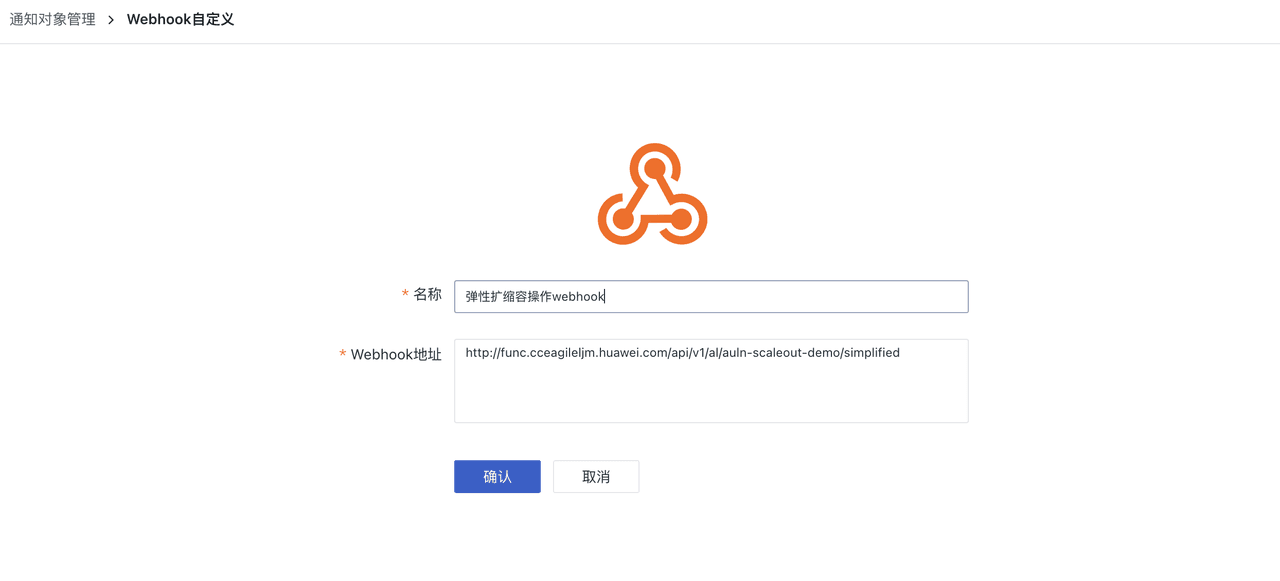
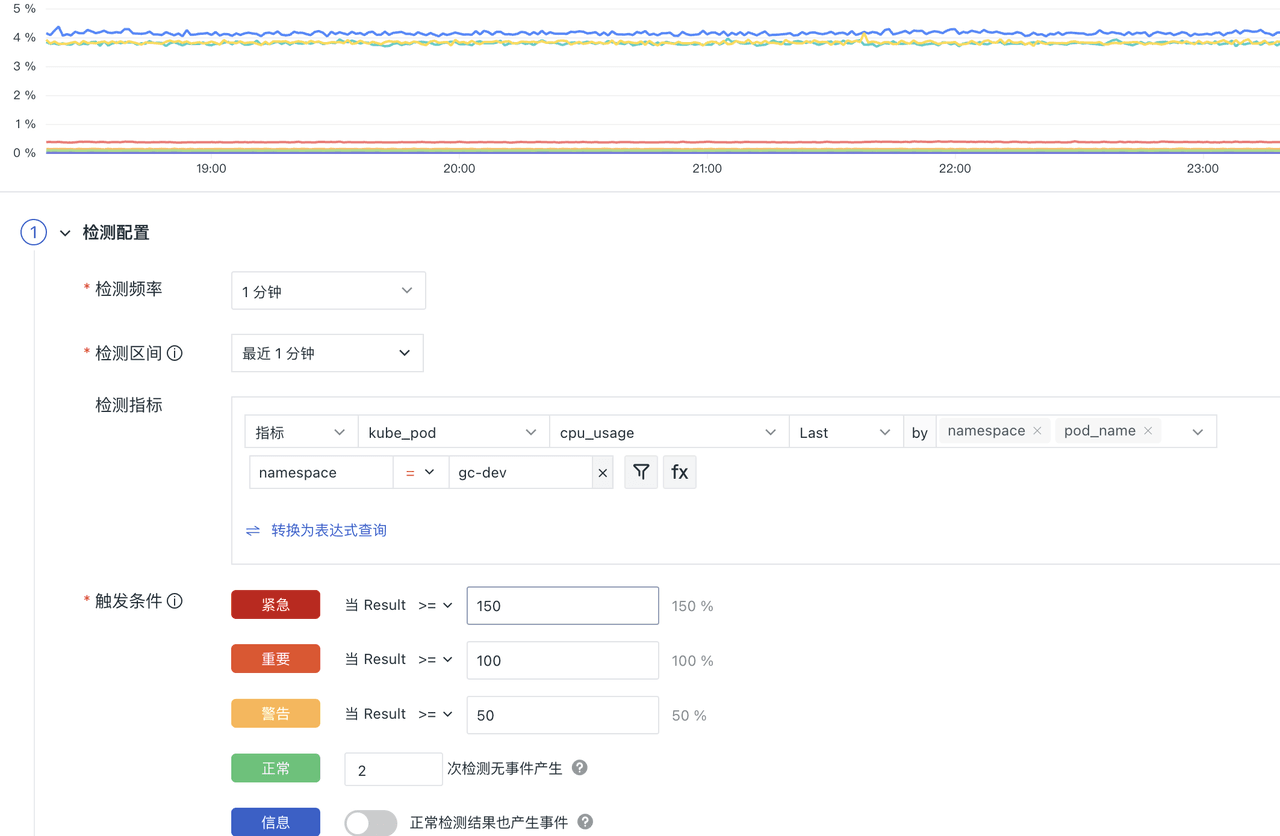
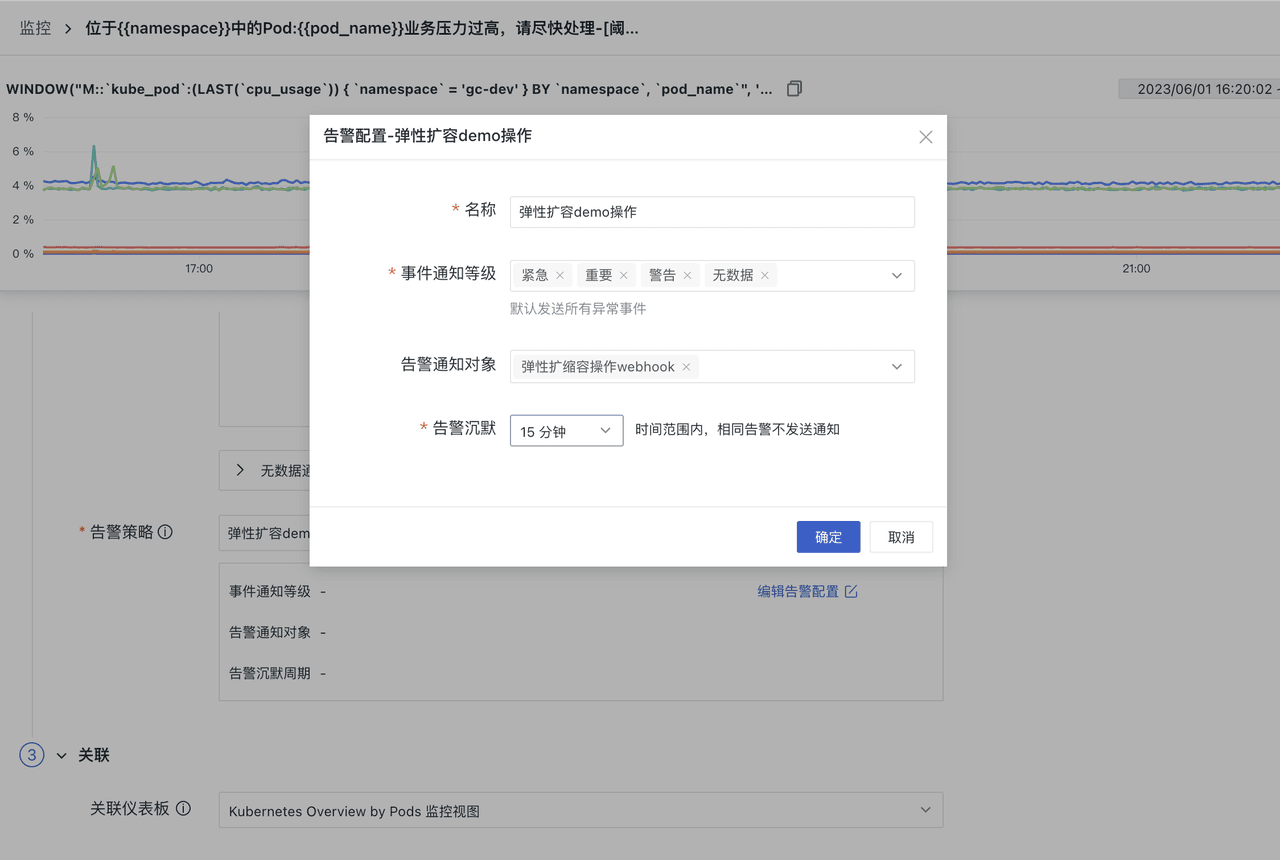
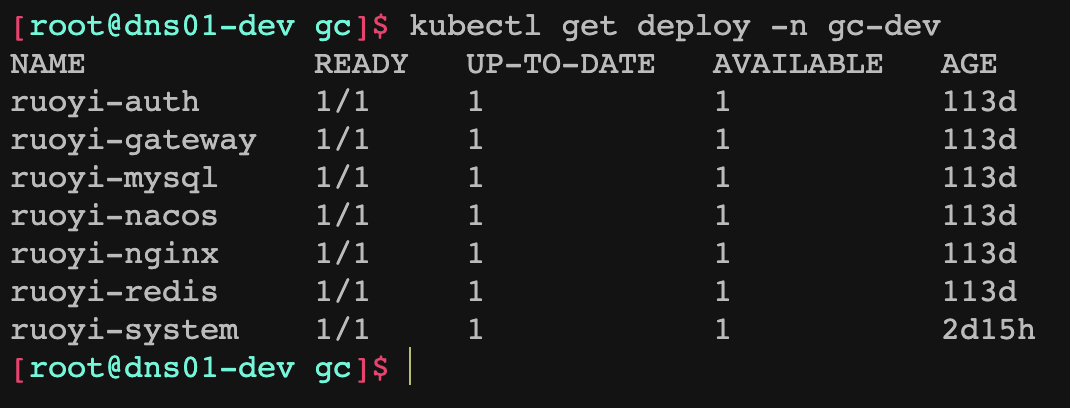




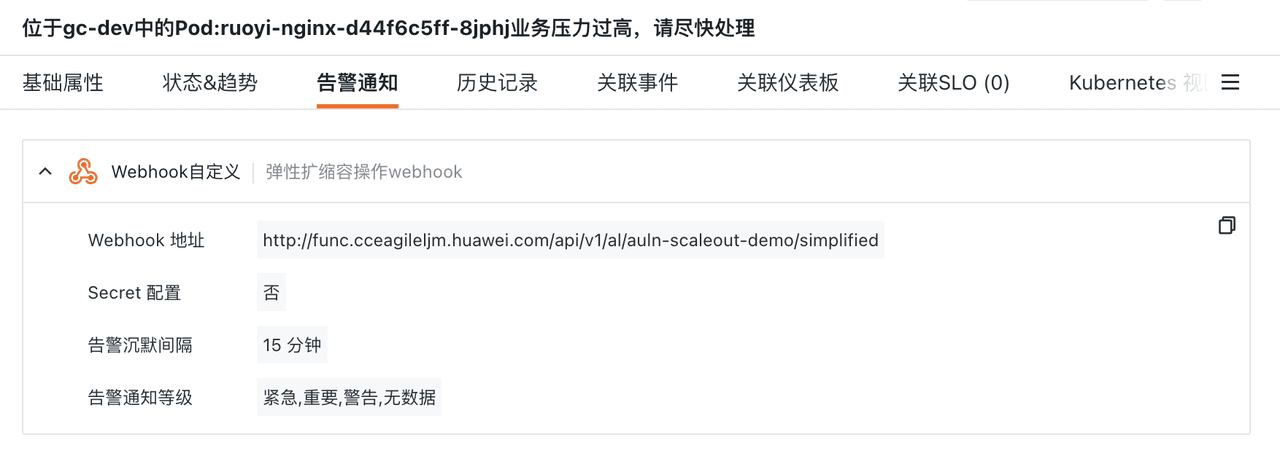

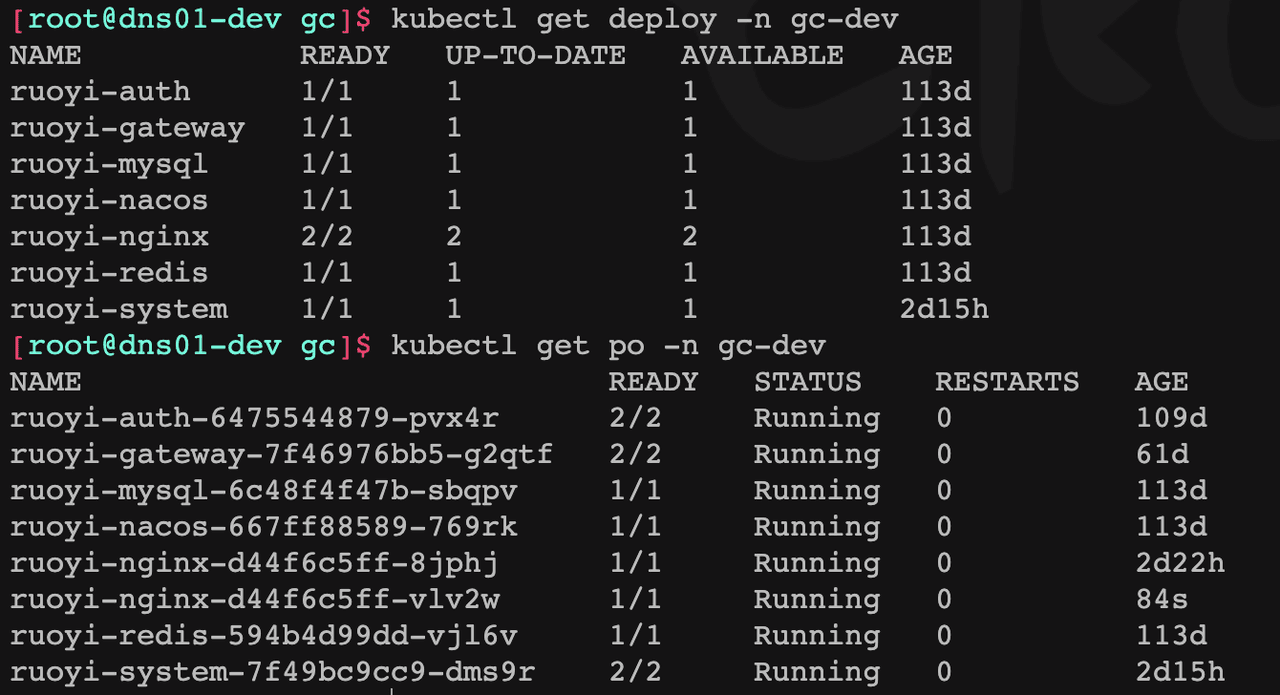











评论